When you think about brogues, it's easy to see them as just another stylish shoe, but their history is much more complex. Originating in the rural landscapes of Scotland and Ireland, these shoes were designed for practicality before they became a symbol of sophistication. You might be surprised to learn how their features, like the iconic perforations, evolved from functional needs to fashionable statements. This transformation not only reflects changes in design but also hints at broader cultural shifts. What you may not expect is how these shoes have influenced social dynamics through the ages.
Origins of Brogues

Exploring the origins of brogues reveals their fascinating history rooted in practicality and necessity. You'll find that these iconic shoes first emerged in the 19th century, designed for the rugged Scottish and Irish farmers who needed reliable footwear to traverse their wet and boggy landscapes. The term "brogue" itself comes from the Gaelic word "bróg," meaning shoe, which reflects their rustic beginnings.
Initially, brogues were crafted from untanned animal hides that featured distinctive perforations. These perforations served an essential purpose, allowing water to drain out, ensuring that the shoes remained functional even in muddy conditions. Their utility was paramount, as the farmers relied on this practical design for their daily work.
Over time, the origins of brogues changed dramatically. What started as purely functional footwear soon became a fashionable staple. As the working class embraced these shoes for their durability, they caught the eye of the aristocracy, becoming a symbol of style in British fashion. This evolution is particularly notable after being popularized by influential figures such as the Prince of Wales.
Today, brogues embody a rich history that intertwines utility and fashion, showcasing how something born from necessity can evolve into a statement piece. So, the next time you slip on a pair of brogues, remember their storied past and the practicality that paved the way for their fashionable status.
Brogue Styles Explained
As brogues evolved from practical work shoes to fashionable staples, various styles emerged that cater to different tastes and occasions. The world of brogues is rich with styles defined primarily by their toe cap shapes. The full brogue, often known as the wingtip, features a W-shaped toe cap adorned with extensive decorative perforations and serration, giving it an elegant flair that makes it perfect for formal settings. If you're dressing up for a wedding or a business event, the full brogue should be your go-to choice.
On the other hand, the semi-brogue presents a straight-edged toe cap, complemented by decorative perforations and a medallion, making it suitable for smart casual outings. It strikes that perfect balance between formal and relaxed, ensuring you look sharp without being overly dressed up.
For those who prefer subtlety, the quarter brogue offers minimal decoration, with perforations along the edge of the toe cap, allowing for versatile dressing that works well in both casual and formal scenarios.
Lastly, the longwing brogue extends the wing design along the full length of the shoe, gaining popularity in the US during the 1970s, and is often categorized as casual footwear. So whether you're aiming for a polished look or a laid-back vibe, there's a brogue style tailored just for you. Embrace the rich heritage of brogues and let your footwear speak volumes about your style!
Design and Features
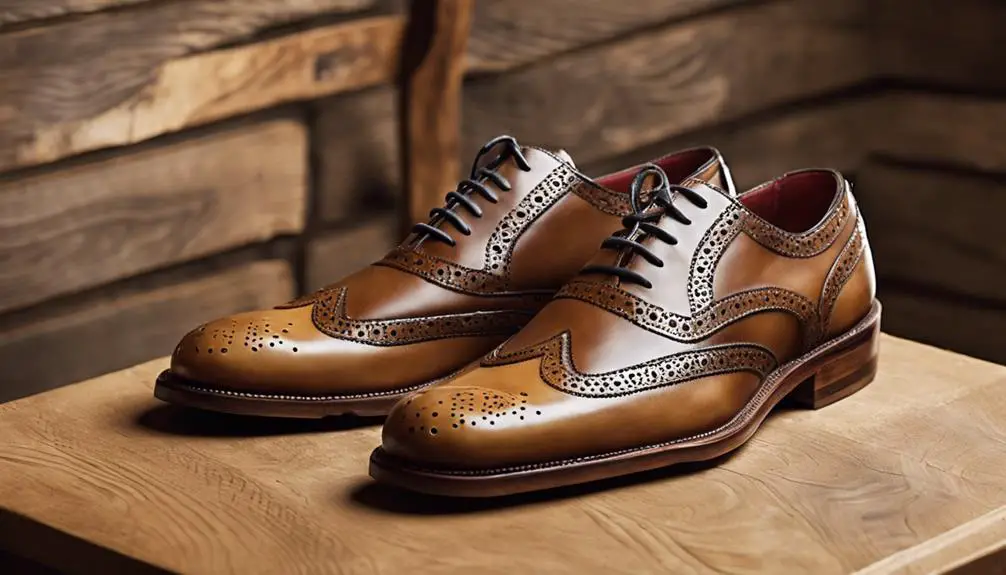
Brogues captivate with their unique blend of style and functionality, showcasing decorative perforations and serrations that not only enhance their appearance but also serve practical purposes like water drainage. These iconic shoes typically feature a multi-piece upper crafted from sturdy leather, guaranteeing both durability and a formal aesthetic that appeals to many.
The design of brogues varies considerably, with different closure styles enhancing their versatility. You might find laced options, such as the classic Oxford and Derby styles, which provide a tailored look, while non-laced alternatives like monk straps and slip-ons offer convenience without sacrificing elegance. Each type brings its own flair to the overall design.
Among the most recognizable variations are full brogues, or wingtips, which sport a distinctive W-shaped toe cap and elaborate brogue detailing. These features not only add character but also tell a story of craftsmanship. Semi and quarter brogues, on the other hand, present less pronounced decorations, making them suitable for more understated occasions.
If you're seeking something truly unique, consider ghillie brogues. Characterizing this style is the absence of a tongue and long laces that wrap around the leg, creating a traditional and eye-catching look. With their thoughtful design and diverse features, brogues continue to be a staple in both casual and formal wardrobes, effortlessly blending style with practicality for every occasion.
Modern Brogue Variations
There's no denying that modern brogue variations have taken the classic shoe style to new heights, making them more versatile than ever. Today, brogues come in a variety of materials, including leather, canvas, and even synthetics, which cater to different preferences and occasions. This expansion in materials means you can find the perfect pair whether you're dressing up for a formal event or keeping it casual on the weekend.
Women's high-heeled brogues are a fantastic example of how traditional design meets contemporary fashion. These stylish shoes blend classic brogue features with modern aesthetics, appealing to a wide audience. Additionally, brogued boots adapt the classic style for colder weather, combining functionality with the distinctive brogue aesthetic, ensuring you stay warm without sacrificing style.
Another exciting variation is the spectator shoe, which features contrasting colors, typically with darker toe and heel caps. This unique twist adds flair to the traditional brogue design, making it a favorite for those looking to stand out.
What's truly remarkable is how brogues now fit seamlessly into various settings—whether you're heading to the office for a business meeting, attending a formal function, or enjoying a casual day out, there's a brogue variation for every occasion. This evolution reflects shifting fashion norms and the growing perception of style, proving that brogues are no longer just a classic shoe, but a modern staple in your wardrobe.
Cultural Impact of Brogues
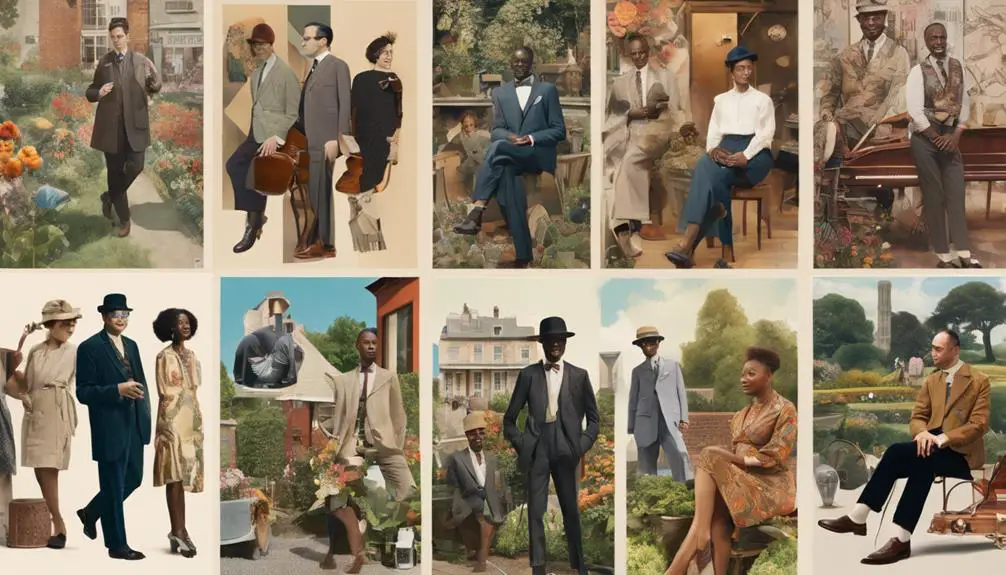
The modern versatility of brogues reflects a deeper cultural impact that transcends mere fashion. Originally designed as practical footwear for wet and boggy conditions, brogues evolved into a symbol of sophistication and style in British fashion by the 20th century. You'll find that their popularity surged in the 1920s, particularly influenced by jazz culture and the rise of black and white two-tone styles, adopted by icons of the time. This evolution demonstrates their capacity to blend tradition with modernity, marking them as a true fashion staple.
Brogues have also served as a social identifier, bridging the gap between classes. Notable figures like Winston Churchill wore them to connect with the working class, while Edward, Prince of Wales, donned them to challenge social elitism, showcasing their cultural significance. Curiously, traditionalists cautioned against wearing brogues after 6 PM, viewing them as formal attire, which highlights the nuanced perceptions surrounding this footwear.
As you can see, the journey of brogues from practical footwear to a symbol of sophistication illustrates their enduring cultural significance. They embody the spirit of British fashion, representing not just a style choice but a connection to history and identity. By embracing brogues, you're not just making a fashion statement; you're participating in a rich tradition that celebrates individuality and social commentary, all while enjoying a versatile and stylish shoe.
Frequently Asked Questions
What Is the Origin of the Brogue?
Ah, the brogue! Born from the Scottish heritage of wet bogs, it's evolved from peasant practicality to high fashion. Different leather types and craftsmanship techniques transformed it, making comfort factors and design variations essential in today's shoe styles.
What Is the Purpose of a Brogue?
Brogues serve to provide stylish yet functional footwear. You'll appreciate their comfort levels, color variations, and cultural significance. Explore brogue styling tips, maintenance guides, and sizing advice for versatile options in various occasions.
What Does the Name Brogue Mean?
The name "brogue" refers to a shoe style characterized by decorative perforations and serrations. It symbolizes craftsmanship and versatility in brogue materials, differentiating it from the Oxford, while reflecting evolving brogue fashion and trends.
Why Do Brogues Have Holes?
Brogues have holes for ventilation and moisture drainage, enhancing comfort and durability. This brogue design showcases craftsmanship, while various materials and styles reflect current trends, ensuring versatility and maintaining a fashionable appeal in modern brogue fashion.
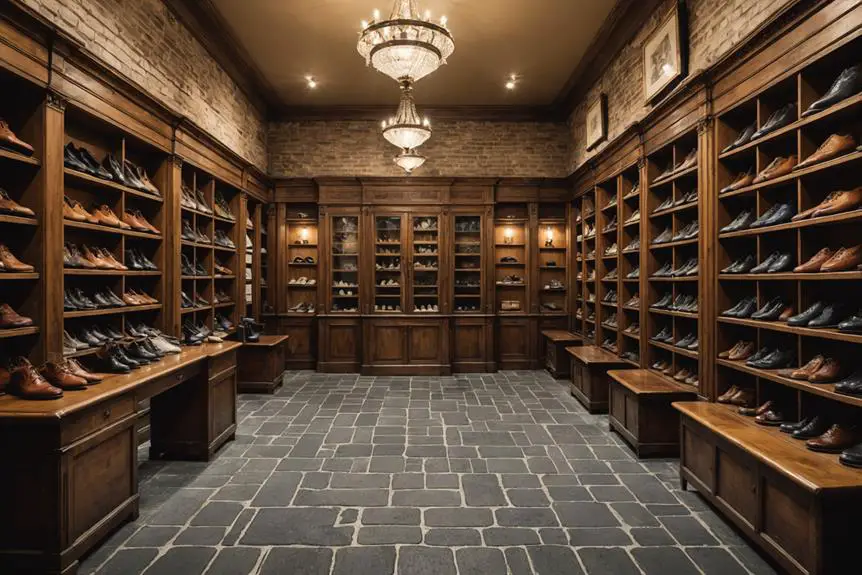

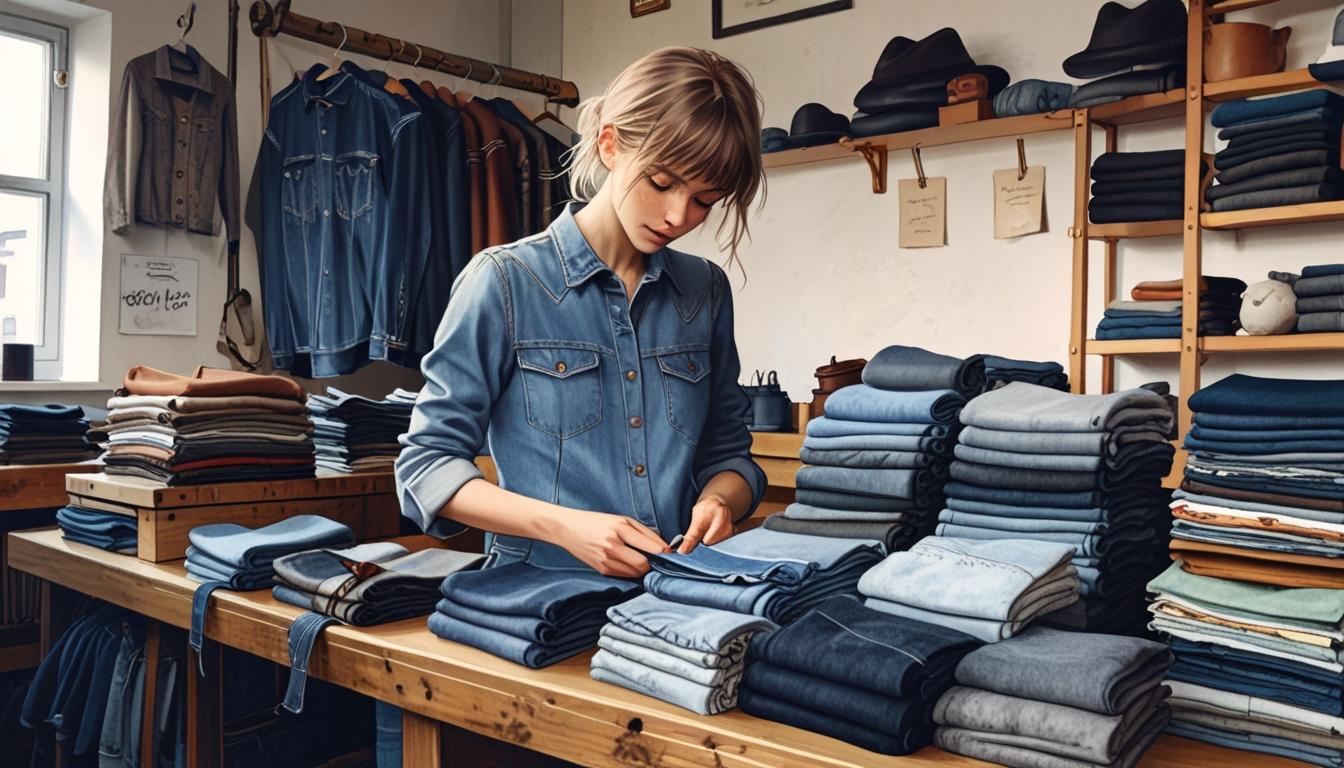

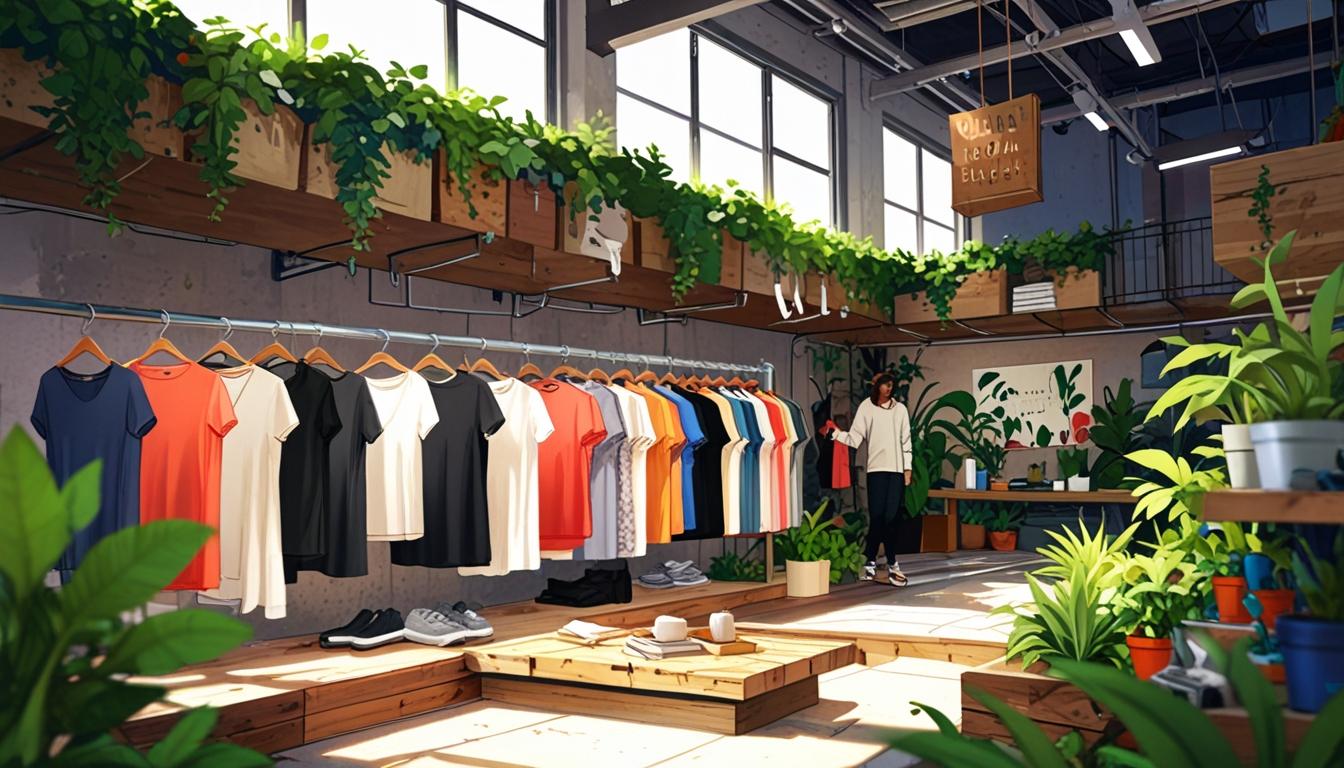
keep up the wonderful piece of work, I read few posts on this web site and I conceive that your website is rattling interesting and has got bands of superb info .